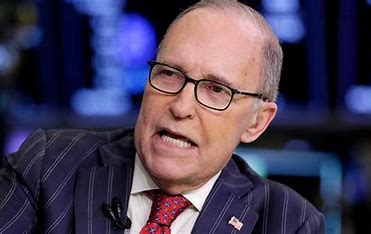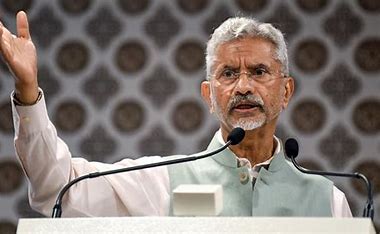
Ancient India had been a hub of education dissemination where students and scholars from far and wide came in hordes in search of knowledge and wisdom. We were considered to be the pioneers for about 1,800 years. Our system of education achieved great heights of fame and glory between the 4th and the 6th centuries CE. This period is known as the golden age of India because of considerable ground-breaking contributions made by Indians to the worlds of exact science, mathematics, astronomy, metallurgy, natural fibres, medicine, surgery, Ayurveda, yoga, etc. However, the merit and the glory of that period gradually withered away partly due to external forces and partly due to the cycle of time, which does not remain the same. But India still has the potential to lead the educational realm as is evident from the significant contributions that Indians are making in the most premier universities and research establishments in the world.
A large number of Indians who have had their schooling and college education in India are occupying leading positions in the most premier organizations of the world on the sheer strength of their intellectual prowess. There are about 400 Indian scientists working in the European Organization for Nuclear Research (CERN) which is a renowned scientific organization of the world, famous for numerous discoveries and inventions, including the invention of the World Wide Web (WWW), the Higgs boson, the PET scan, etc. Similarly, there is a strong presence of Indian scientists – about 36% of the total strength—at the National Aeronautics and Space Administration (NASA), which is another acclaimed scientific organization in the world. There is an equally strong presence of Indian technocrats in top-notch companies like Microsoft (34%), IBM (28%), Intel (17%) and Xerox (13%). Also, there has been a noticeable presence of Indian professors holding key positions in the best of international universities like Harvard, MIT, Stanford, Columbia, Cornell, Rutgers, Kellogg-Northwestern, University of California, Chicago, Oxford, Cambridge, Imperial College and London School of Economics, to name a few.
There are also a large number of Indian scientists who have gained global recognition and commendation for their accomplishments whilst working primarily with in-country organizations like Indian Space Research Organization (ISRO), Defence Research and Development Organization (DRDO), Hindustan Aeronautics Limited (HAL), Centre for Cellular & Molecular Biology (CCMB), Bhabha Atomic Research Centre (BARC), Indian Council of Medical Research (ICMR), Indian Council of Agricultural Research (ICAR), etc. These are all public institutions which make every Indian proud of their achievements. And what is even more remarkable about these organizations is that they are all manned by brilliant men and women who happen to be the proud products of Indian schools, colleges and universities. There are wonderful people and magnificent institutions in our country which have the potential to regain the earlier glory of the land.
We need to recognize the potential of Indian talent and strength of our institutions. If Madras University can produce two Nobel laureates, C V Raman (1930) and Subrahmanyan Chandrasekhar (1983), Calcutta University can produce two, Amartya Kumar Sen (1998) and Abhijit Vinayak Banerjee (2019), Punjab University can produce Har Gobind Khorana (1968), M S University, Baroda can produce Venkatraman Ramakrishnan (2009) and Barkatullah University can produce Kailash Satyarthi (2014), then others can also bring in similar recognition with the right kind of orientation and investment. Although their awards cannot be wholly attributed to a single factor, the foundation laid by their alma mater cannot be discounted either. Interestingly, it needs to be noted that all these Nobel laureates are the proud products of public universities, which includes JNU as well, since Abhijit earned his Master’s degree from there.
Benjamin Franklin had said that “an investment in knowledge pays the best interest”. This is why education has been rightly recognized as a unique investment in the present and the future. The primary responsibility of the university is fourfold. It creates new knowledge, transmits knowledge, certifies knowledge and maintains the highest standards of teaching and learning. The creation of new knowledge in present times has become an extremely expensive proposition as it not only requires the brightest minds but also high-end research and development facilities. Thus, funding of research, autonomy and self-governance of higher education institutions become essential ingredients for global competitiveness, let alone get close enough to become a world leader. Sadly, all these elements are lacking in the university system and the result is a clear and continuous decline.
It may not be inappropriate to share two anecdotes to put the importance of autonomy and self-governance into context. Gopalaswamy Parthasarathy was made the first Vice-Chancellor of JNU in 1969. He had enjoyed the most genuine financial and administrative autonomy. He exercised the freedom to identify and negotiate with the best Indian scholars and bring them to the university with no questions asked. He is fondly remembered for his integrity and seminal contribution in institution building. Another equally inspiring case is that of Prof. Gurbaksh Singh. He was persuaded to go as a Vice-Chancellor to build the University of Hyderabad in 1974. The university was allocated land in Gachibowli which was far away in the outskirts of the city of Hyderabad. Prof Singh was very fond of buffalo’s milk which was not easily available on the campus. So he put up a request to the authorities to sanction him money for the purchase of a buffalo and, lo and behold, his request was conceded, for the authorities knew it well that he was the person who would make the university a great institution, which he did.
Since then, things have come to such a pass that we have not been able to establish any public university which can match with either JNU or the University of Hyderabad. Public funding continues to remain in short supply, not keeping pace with the growing demands of higher education, and autonomy, which is on paper, also finds a scant respect in practice. The total grants released to three of our research-intensive universities during the year 2017-18 reveal that while the University of Delhi received a sum of Rs 495.86 crore, JNU and the University of Hyderabad received only Rs 373.51 crore and Rs 251.36 crore, respectively. The total budget of these three universities turns out to be Rs 1,120.73 crore which is miniscule in comparison to the budget of Oxford (2,145 million pound), Harvard ($5.2 billion) and Stanford ($6.6 billion). They are the world leaders with whom our universities are expected to compete in global rankings.
As regards autonomy, the lesser we talk the better it is. Gone are the days when the Chief Ministers and Ministers would hold the office of the Vice-Chancellors in such high esteem that in the event of an actual emergency, they themselves would visit the office of the Vice-Chancellors instead of calling the Vice-Chancellors to their offices. The legacy created by the Vice-Chancellors of the yesteryears seemed to have gone downhill. Over the years, there has been a humiliating climb-down from both sides and the consequences are scary. The officer of the rank of an under-secretary now has the audacity to issue fiats to the Vice-Chancellors and ask for compliance. Quite a few of them got so used to it that they seek appointments to call upon the under-secretaries and deputy secretaries.
Indian higher education is suffering from multiple crises. Most pertinent amongst them are the crisis of quality, crisis of resources and crisis of governance. We have to be open to questions linked with each one of them to find the best way forward. The first and foremost question is: can our universities not be the best? We have to be realistic and get over this fact. All of them cannot be the best as is the case globally. However, the most notable and admirable aspects are that our schooling is admired for good grounding and grooming skills the world over and some of our universities have a real potential to be the best, provided they are set free and supported the way the advanced comity of civilizations are supporting their universities.
Second, are our universities not able to compete successfully in global rankings due to a severe shortage of funds? Though there could be more than one reason for this, the scarcity of funds is the most pertinent one. It is evident from the fact that the total annual budget of three premier universities like DU, JNU, and Hyderabad is Rs. 1,120.73 crore. The annual budget of ISRO during the same period is Rs. 9093.71 crore. The moot point here is that people working at ISRO are the proud products of these very public universities and while they have made a mark at the international level, universities armed with identical scholarships are still less than optimal. This is the issue which requires the commitment of the highest order at the level of the government.
Third, is there an acute shortage of visionary leadership in our university system? Is something horribly wrong with the appointments of Vice-Chancellors? Are we appointing Vice-Chancellors on the basis of recommendations of persons who do not have any sense of responsibility and accountability to the system? These are very vital questions and need to be looked into and addressed upfront if there is a shred of truth in them. There is no talent shortage. It is all about honesty and impartiality in its identification and unlocking.
Lastly, the biggest question is: how long are we going to keep lamenting about the decline in standards and how long would we remain in a delusional state of becoming world leaders if we do not fix these critical issues upfront? Indians have proved beyond reasonable doubt their creative talent, which is assiduously nurtured by their homeland institutions, be it at ISRO, DRDO, NASA, CERN, or any other place. They can surely regain their lost glory.
The author is former Chairman, UGC. The views expressed are personal.















